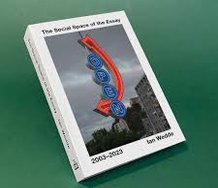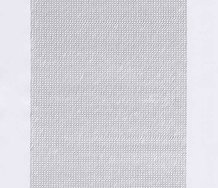Andrew Paul Wood – 21 August, 2010
Like a bleak collection of suicide notes, The Illustrated History is a document of the Death of Painting. Boyce clearly relishes the negativity like a connoisseur. Schadenfreude is, after all, the purest pleasure because it is free of envy. It is also a sentimental celebration of sorts, relishing the whole received typecast culture of painting: canvas, palette, smock, beret, mistress, absinthe, syphilis, garret, studio, severed ear, suicide. Modernism was embarrassed by such things, but Postmodernism positively revels in it.
Christchurch
Roger Boyce
The Illustrated History of Painting
Curated by Justin Paton
13 August -14 November 2010
As the anonymous hack in the MGM studios commissary once quipped, “Shit has its own integrity” - an axiom Roger Boyce appears to have taken to heart in his new exhibition The Illustrated History of Painting at Christchurch Art Gallery. I mean that in a good way. The Cynic, with finely-tuned irony detectors, knows that exuberant and deliberate awfulness frequently achieves a kind of kitschy, sentimental popularity and impact that simply cannot be faked.
That is the spirochete-riddled, schlerotically barnacled bloodstream of popular culture. Under such conditions, what is an artist? Only since the camera drove the Impressionists away from naturalism (and rendered the portrait largely redundant) have paintings been created in the first person. Then, as a safety valve, following the lead of authors James Joyce, Ezra Pound and T.S. Eliot, the painters found ways of hiding behind the work again.
The Illustrated History is a paean of sorts to the artist-as-addlepated-doofus persona that Boyce adopts (as the French say, Bête comme un peintre - ‘as dumb as a painter’) beyond an equally false Grumpy Old Man façade, as a sort of distancing ‘unreliable narrator’ to help him filter and sort aesthetic experiences. It is a truly epic series: 100 small wooden panels. Imagine an art history book - a sort of ‘Great Moments in Painting’ crossed with Vasari and Bellori, a ‘Lives of the Saints’ here, Ovid’s Metamorphoses there, and one of Poussin’s many Academic ‘allegory of painting’ canvases.
The wooden panels are arranged as a single row all around the gallery space, just like a dismembered book, each with its label. The size and medium suggests something devotional - Renaissance panel paintings depicting scenes from a Golden Legend of martyred artists.
The imagined, interposed artist is similar to that characterised by poet John Fuller in his Onegin-esque verse novel The Illusionists (1980), ” ‘…a man / Perfect in every way. Began / In life as an East End shopfront letterer, / Went on to banknotes, but loves art, / Paints the old masters à la carte’…”
And when he was completely blotto
And therefore really up to par,
Another cognac saw a Watteau
Or possibly a Fragonard
Take gradual shape beneath his trembling
Brush. On gin he’d do a Memling.
A schnapps tended to make him squint:
Fine for a Dürer aquatint,
While grappa brought on Titian’s Pontius
Pilate washing his hands of Christ,
A work that wasn’t overpriced
Given he did the hands half-conscious
(Though some de Koonings he had sold
Had been completed while out cold).
Boyce’s surrogate puppet homunculi with their quasi-cliché equipage of palette and easel strive for the heroic heights of Parnassus, but always find themselves in disastrous situations reminiscent of a tidied up Mike Kelley or Manuel Ocampo. The results are scatological, sordid, pathetic and frequently terminal. The little artists fall prey to ribald parody and bitter burlesque crafted out of a syntax of urine, Guston-esque shit, fetishism, accidental death and general mayhem. Little artists are impaled on brushes (Breakthrough), have their heads served up on palettes (The Critic), bleed paint like a mystic and incontinently piss rainbows (Stigmata and Rainbow Coalition) and frequently drown (Great White, Yves, and Agua Libra) metaphorically in the art world. This cathartic act of serial killing (or is it a mass murder massacre?) serves as matrix for a free and critical creative consciousness. An unhappy Postmodernism, eschewing hierarchy of source and history, looks at itself in Interesting Times.
No cliché is left unexplored. In Jackson, Pollock makes his mark by blowing his brains out over the canvass.
Like a bleak collection of suicide notes, The Illustrated History is a document of the Death of Painting (reports of which have been greatly exaggerated, which of course is part of the joke). Boyce clearly relishes the negativity like a connoisseur. Schadenfreude is, after all, the purest pleasure because it is free of envy. It is also a sentimental celebration of sorts, relishing the whole received typecast culture of painting: canvass, palette, smock, beret, mistress, absinthe, syphilis, garret, studio, severed ear, suicide. Modernism was embarrassed by such things, but Postmodernism positively revels in it.
If any South Island installation has the wit and gravitas to stir the stagnant Auckland-centric prejudices of the New Zealand art establishment, The Illustrated History of Painting deserves to be shortlisted for the Walters Prize.
Andrew Paul Wood
Recent Comments
John Hurrell
Earlier this week I spent some time looking at Roger Boyce’s show of hundred small paintings. It is a rich ...
Matthew Arnold
Justin Paton's thoughts from the Christchurch Art Gallery blog http://tiny.cc/cy7iq
John Hurrell
I think Andrew, in theory, those factors were considered. Kate Montgomery was the South Island representative on the panel that ...





 Two Rooms presents a program of residencies and projects
Two Rooms presents a program of residencies and projects Advertising in this column
Advertising in this column



This Discussion has 5 comments.
Comment
Simon Esling, 2:50 p.m. 24 August, 2010 #
Hi Andrew,
Only recently discovered Roger Boyce but then again I am here in Auckland and we can be very centric.
I like your review, a little verbose at times but captures an excitement that the work warrants. I agree re:shortlist but the artists weren't always Dorklanders now were they?
Again, thanks for drawing attention to a great painter.
Simon
Andrew Paul Wood, 5:44 p.m. 27 August, 2010 #
Hi Simon,
given that Roger is from the US it don't really think it matters a rat's freckle where the artist comes from, but when a prize claims to have a national focus, it should take into account galleries and other exhibition venues nationally. People in Christchurch, for instance, are most aware of what shows in Christchurch, and the same goes for the Wellington and Dunedin scenes.
John Hurrell, 9:35 p.m. 27 August, 2010 #
I think Andrew, in theory, those factors were considered. Kate Montgomery was the South Island representative on the panel that picked the 4 finalists. Even though four Auckland shows were selected in the end, there was a process that attempted to be fair.
Matthew Arnold, 10:09 a.m. 30 August, 2010 #
Justin Paton's thoughts from the Christchurch Art Gallery blog http://tiny.cc/cy7iq
John Hurrell, 2:34 p.m. 20 October, 2010 #
Earlier this week I spent some time looking at Roger Boyce’s show of hundred small paintings. It is a rich array of bright images that remind you of eye-catching circus posters – that trope being obviously deliberate: art maker (notably ‘painter’) as public performer. They are a sort of blend of Glen Baxter meets Mark Tansey, with a pinch of figurative ‘social’ Guston thrown in. The show is really about the joys of self–flagellation, internal critiquing, the delicious pain of the artmaking compulsion, and jumping through the hoops of artworld scrutiny.
Whilst some of the works are over rough for their scale, and Boyce’s process of (physically) layered imagery made too obvious by the highly reflective, applied gloss varnish that reveals the ridges of underlying painted shapes (too bad he didn’t use ‘semi’), the show does repay several visits. There is a lot to take in and even three looks won’t do it justice. These images should really in a publication to be enjoyed at home with one’s ‘squeeze’ and ‘poison’ of choice.
Three works I particularly enjoyed are ‘Rainbow Coalition’, where the artist is drinking a bottle of multi-hued paint that is also leaking out of his nether regions as a form of rainbow coloured dysentery, a related ‘The Bulimic’ where the artist is gleefully guzzling down a tiny easel holding a painting of a rose in a vase, and the mock-tragic ‘Q & A’ where the painter is Don Quixote on his horse with a lance/brush, bearing down on a windmill of four blank canvases turning on easels.
Boyce’s painter artist is a kind of transparently self-destructive fool – not somebody communicating wisdom, but an exhibitionistic nitwit who can’t escape his own stupidity, something he is very much aware of. His foibles we can’t help but enjoy watching, even though most of us are little different. They are internal monologues broadcast to an audience loitering around the Coliseum, waiting for failure in a sawdust–filled arena.
Participate
Register to Participate.
Sign in
Sign in to an existing account.